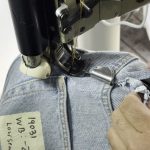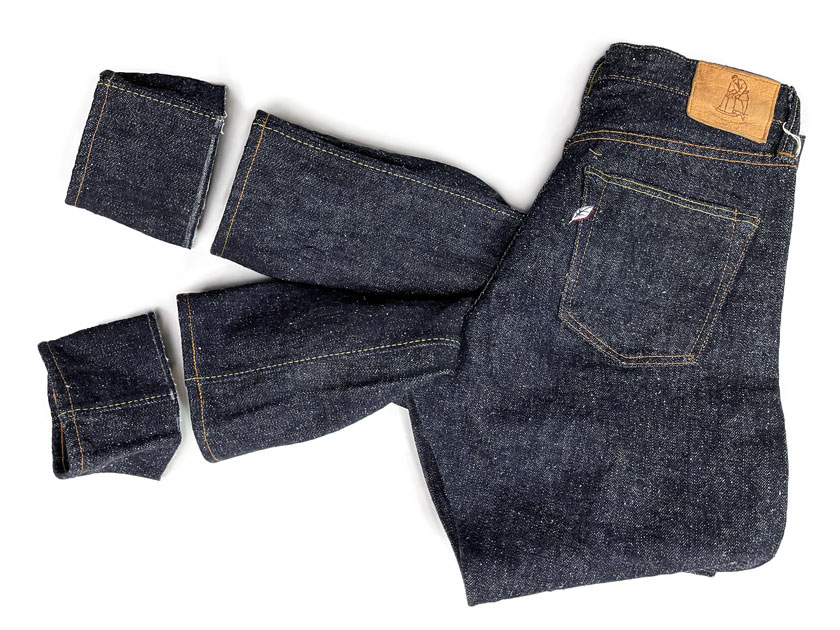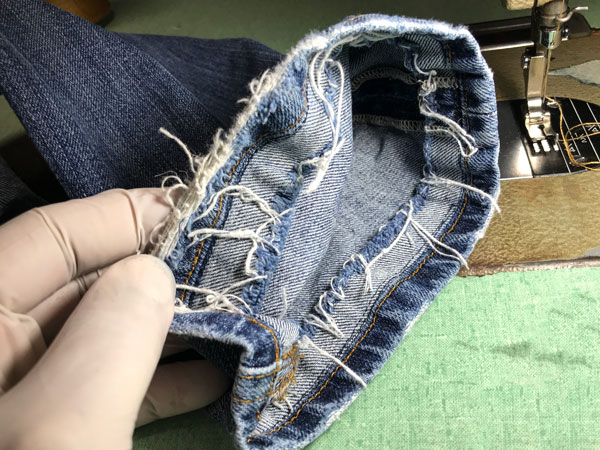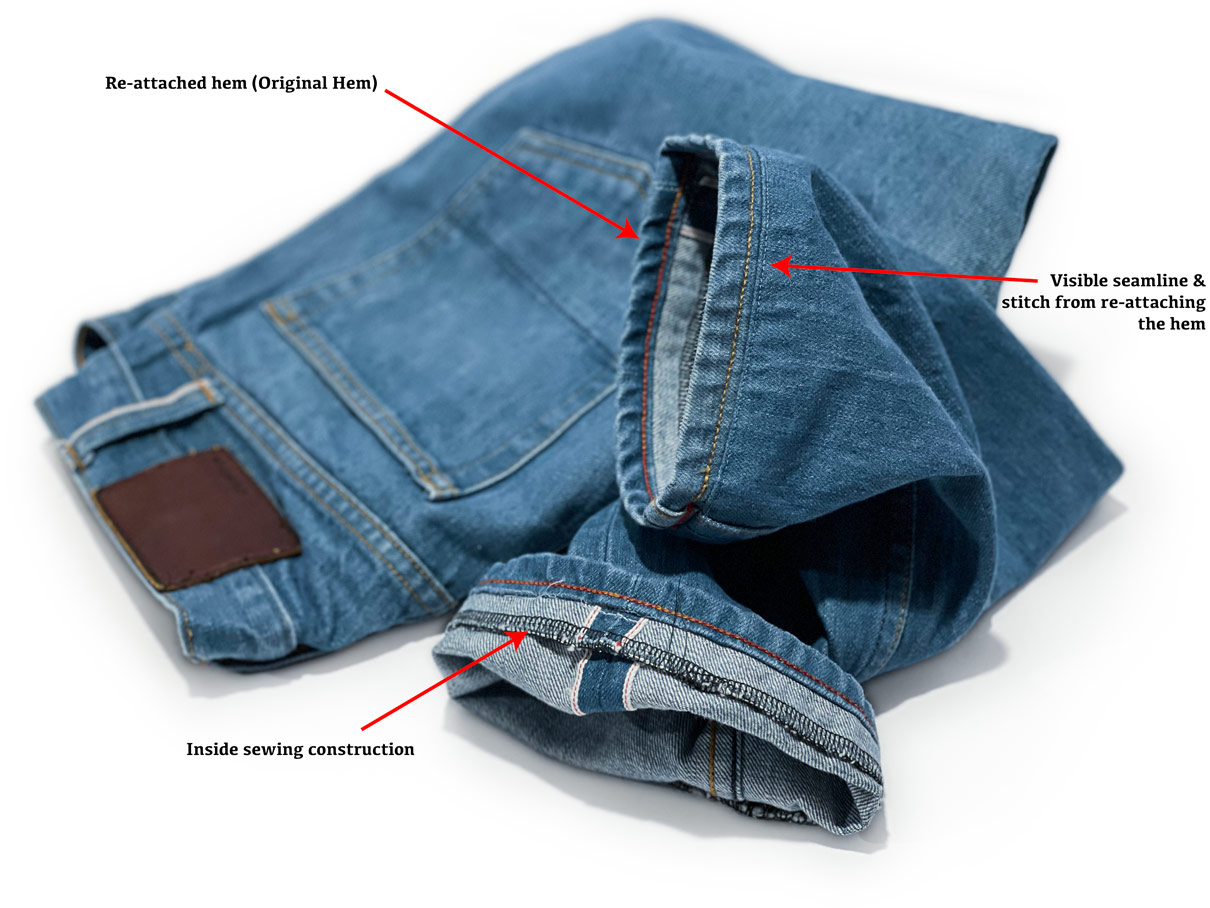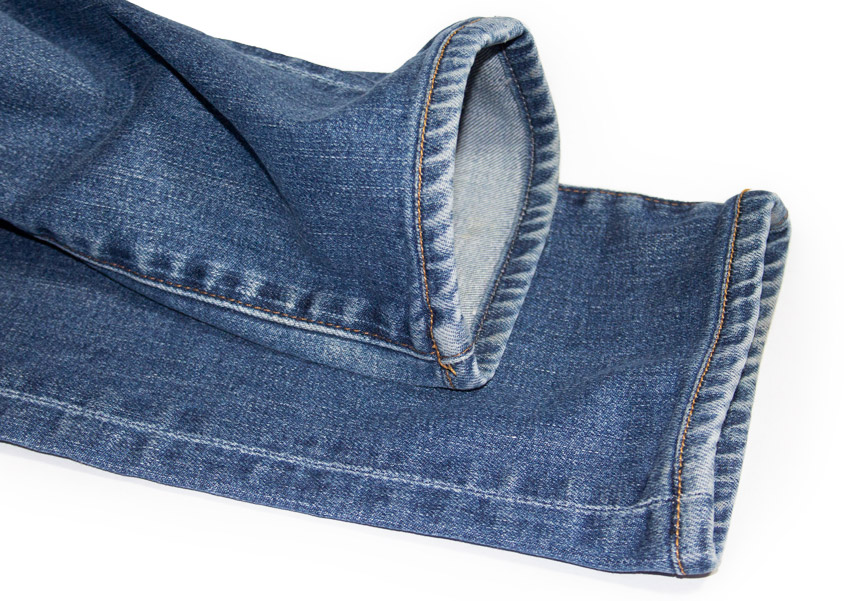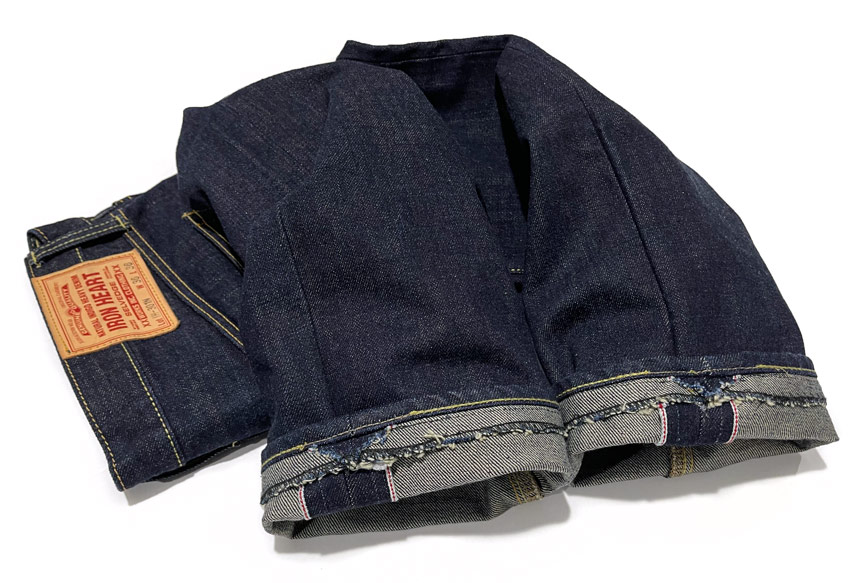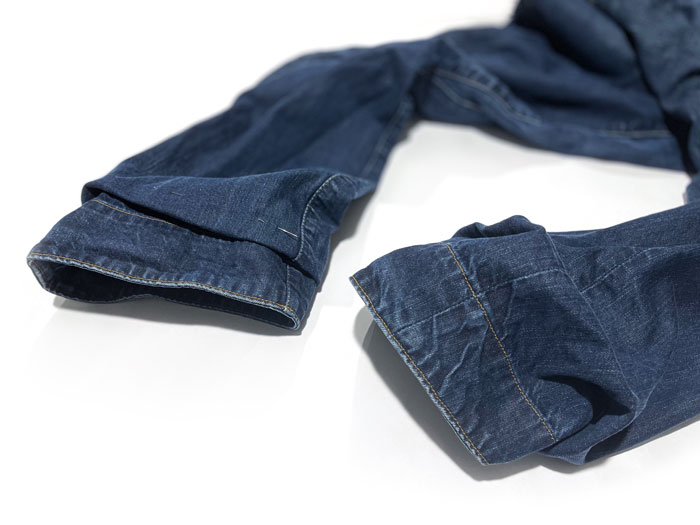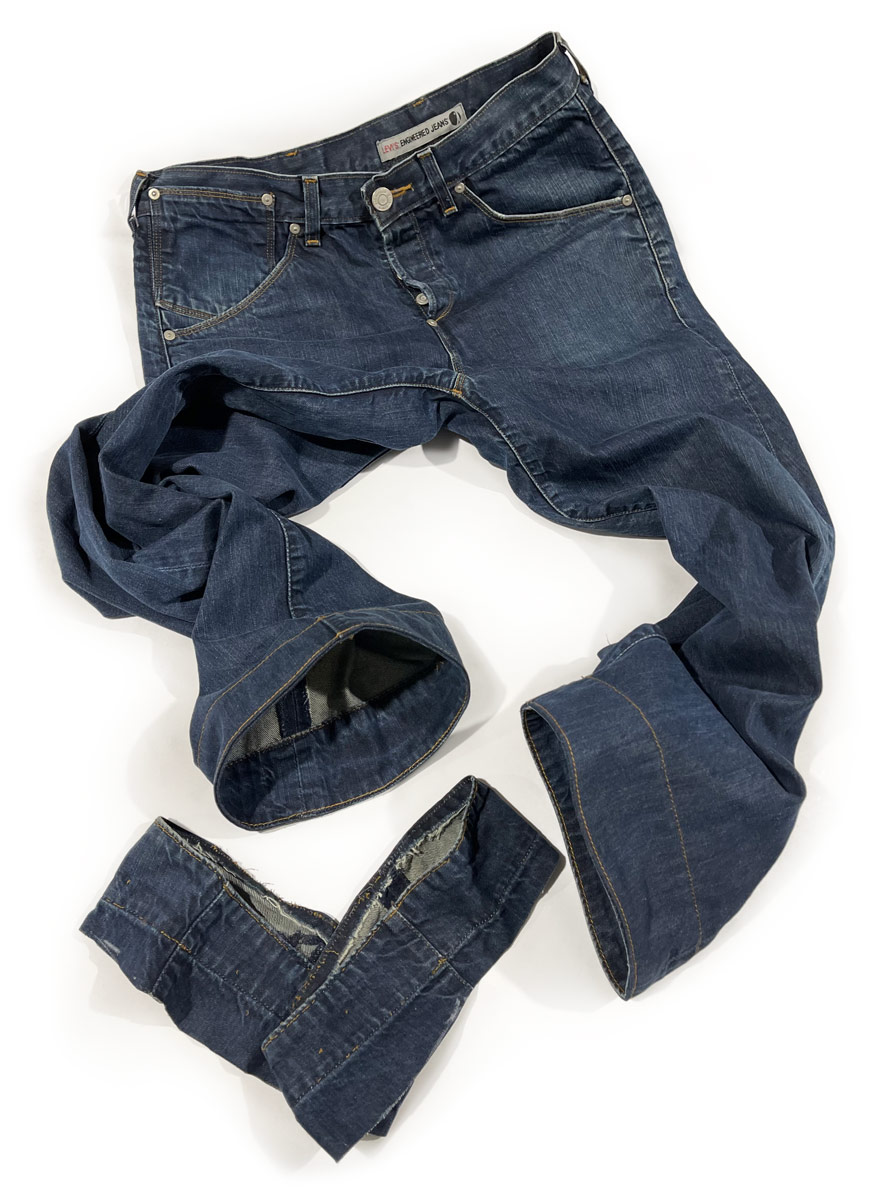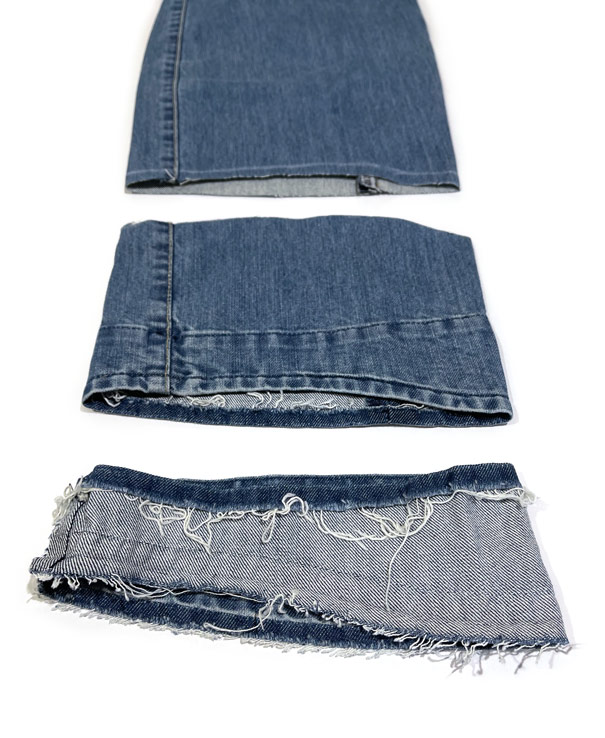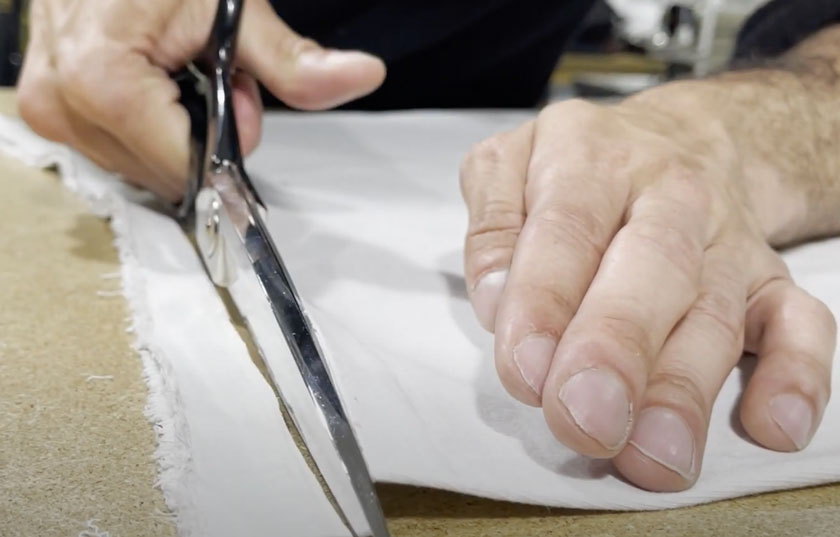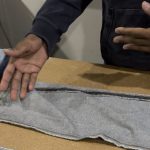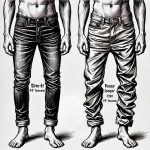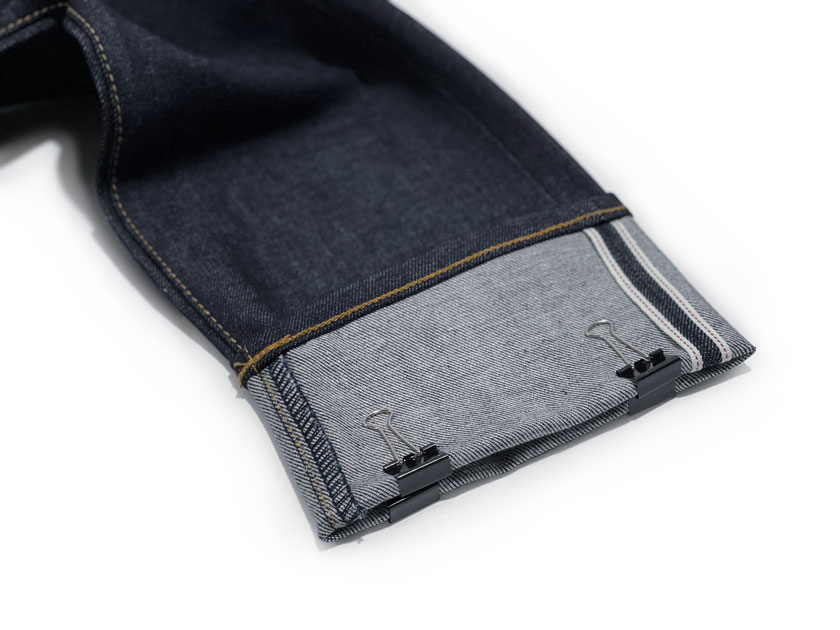
Here’s what to do if you want to send your jeans or pants to a tailor for hemming service but don’t have a measuring tape. Because everyone has their own personal style, we won’t get into whether or not your pants should have a break, no-break, or hang just above your shoes. We will give you a few good tips on how to mark your desired inseam length.
- Put on your pants and approach a mirror wearing the shoe style you prefer with your pants.
- Cuff or roll the legs of your pants to the desired inseam length.
- Select the best-fitting leg, then bend down and secure it with a pin or clip at the folded edge.
- Uncuff or unroll the second leg so there is no confusion about which leg to use as the standard.
- Ship or hand-deliver the pants to your tailoring service and instruct them to follow the marked leg.
Because most people never mark both legs exactly the same, it is best to mark one leg. If the tailor needs to contact you to determine which size of the two legs is best, the tailoring process may be slowed.
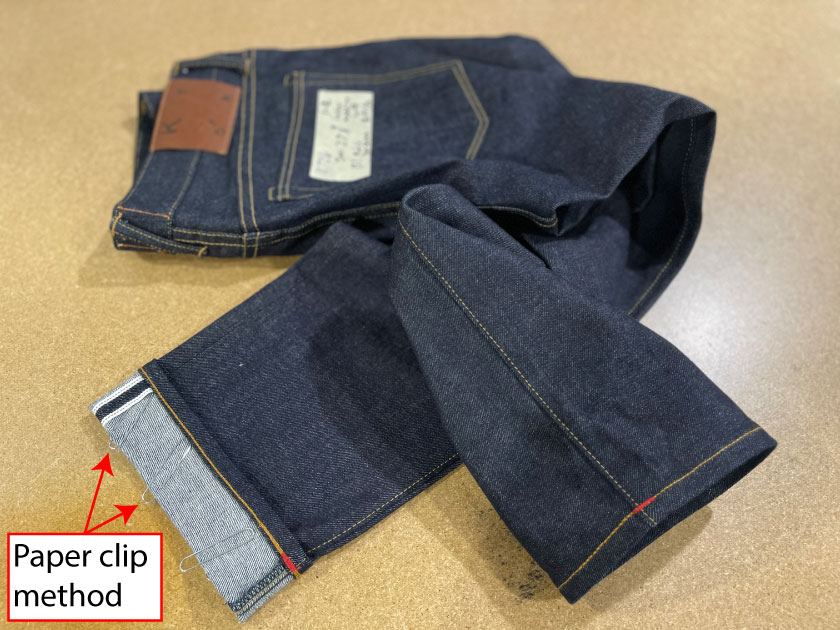
If you don’t have a clip or pin, use an iron to press the cuff into place for a secure hold during the shipping or drop-off process. You can also mark the location with washable chalk or tape.




